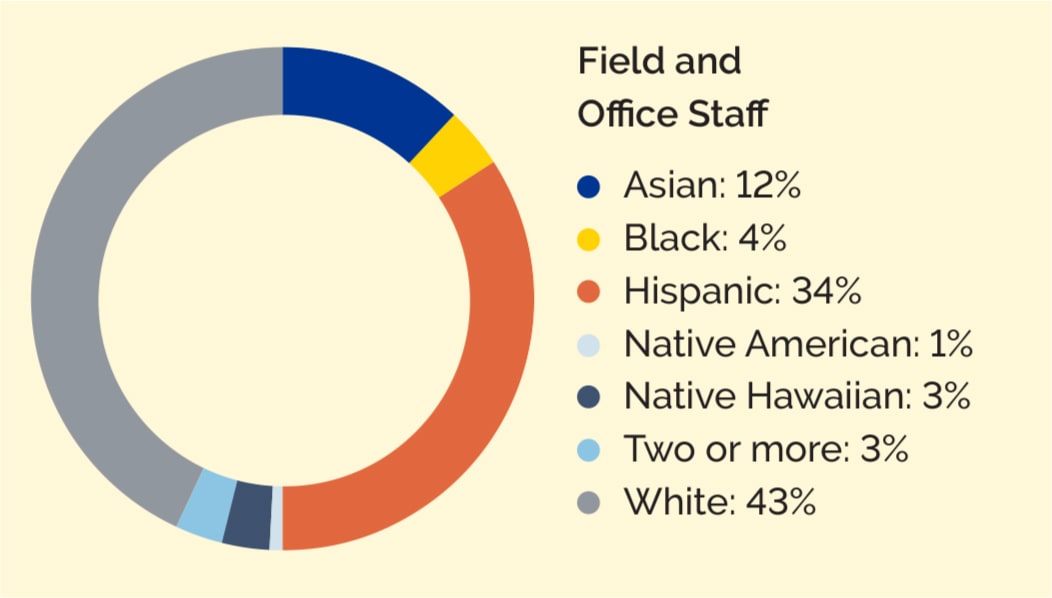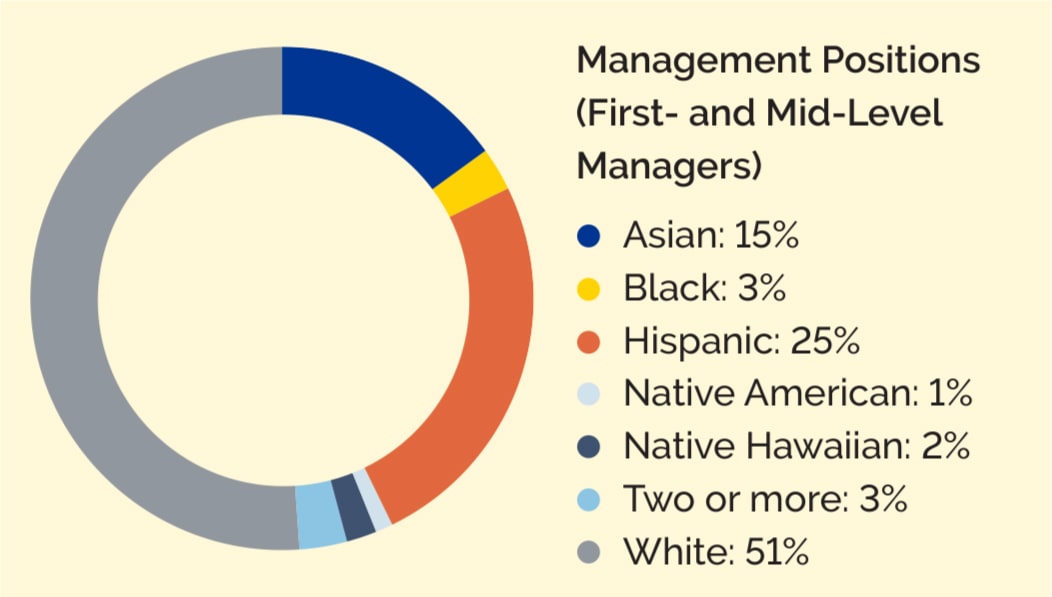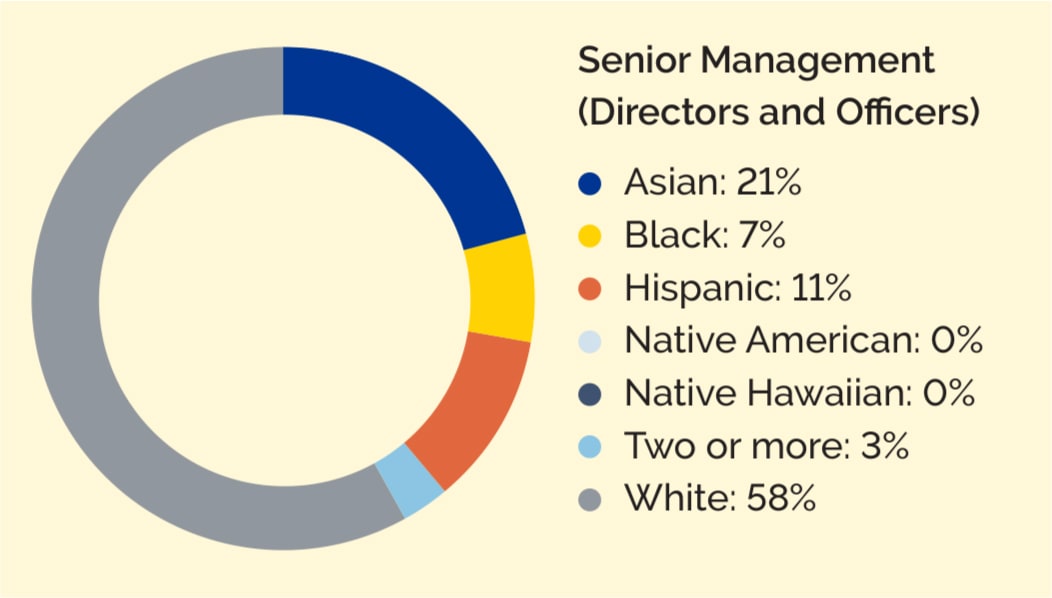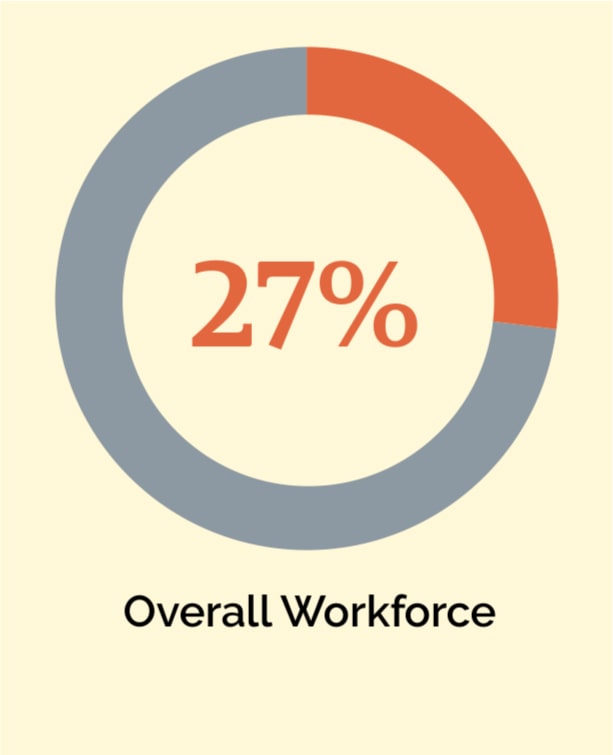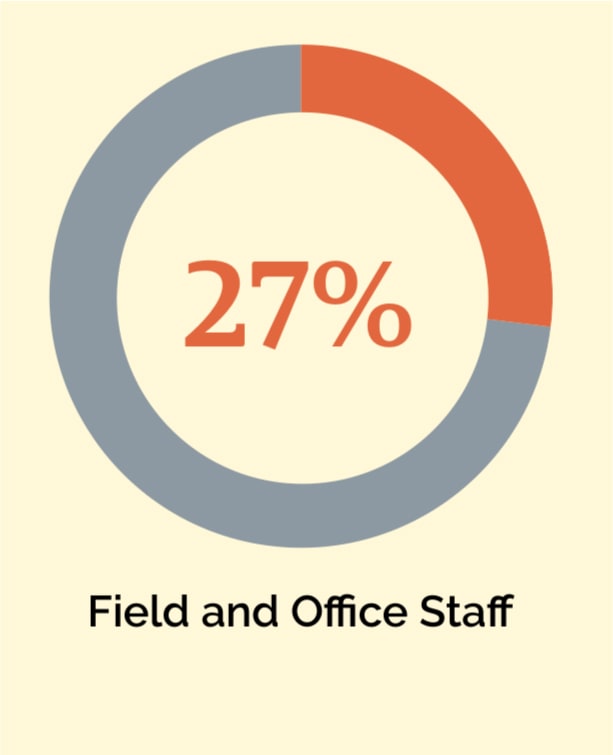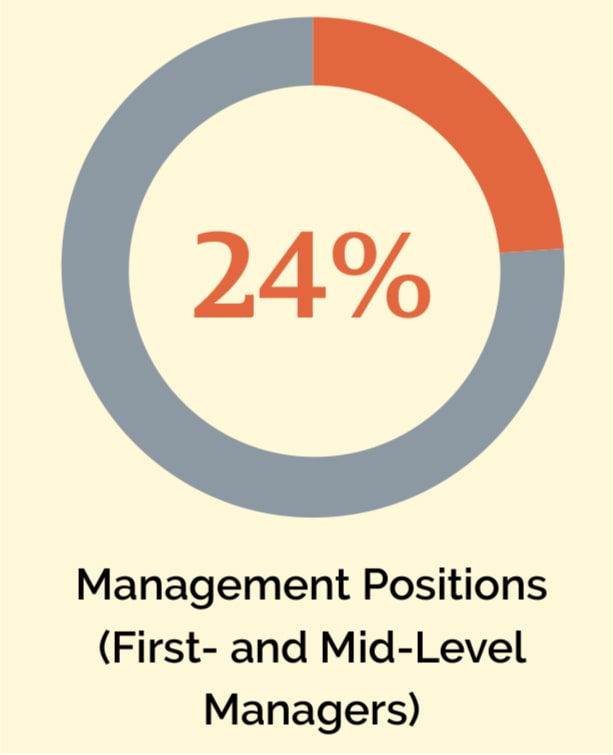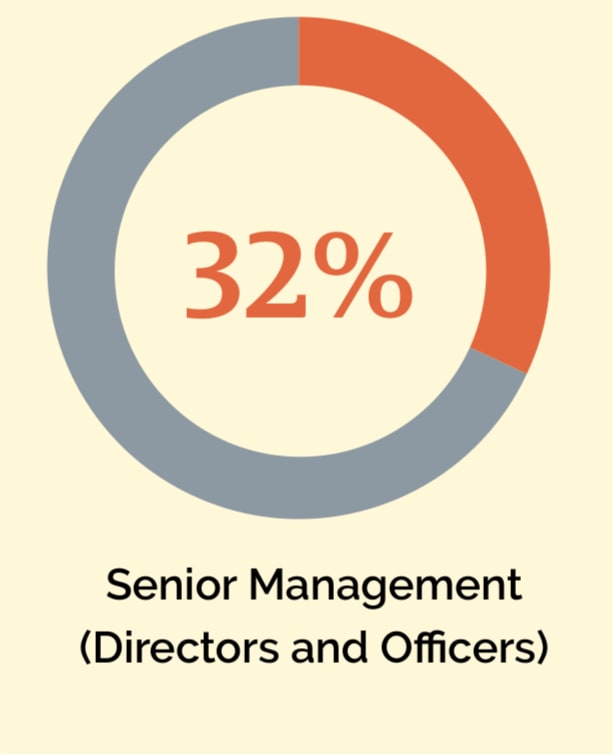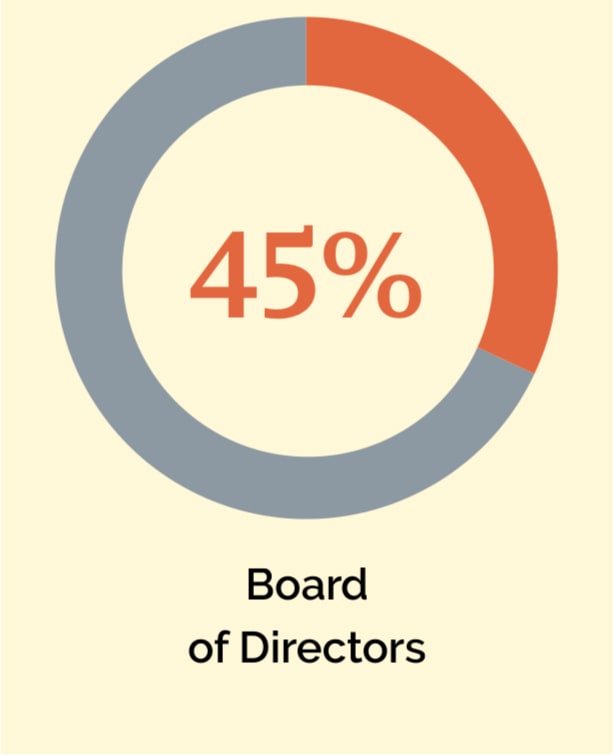Talent Attraction
We aspire to recruit highly qualified professionals with a team-oriented mindset, effective leadership skills, and a passion for innovation. Candidates should also share our values and ethical standards, as well as our commitment to delivering high-quality service to our customers. Our hiring managers are trained to offer flexible interview formats, promote diverse perspectives, and receive unconscious bias training to help minimize potential preferential treatment and promote consistent hiring practices. For more information about inclusive hiring, see the Diversity, Equality, and Inclusion section.
We frequently collaborate with local high schools, trade schools, and colleges across our subsidiaries to help teach students about potential careers in the water industry and develop our talent pipeline. For example, through our regular engagement with Cristo Rey Jesuit High School in San Jose, Calif., we support low-income and at-risk students by offering work experience across our teams, including our Facilities, IT, Human Resources, Engineering, and Accounting departments. Additionally, we participate in career fairs and provide internship opportunities to students through our partnerships with San José State University and California State University, Bakersfield. Other established partnerships include those with Santiago College, Gavilan College, Cañada College, and California State University, Long Beach. We are also part of a California Water Association group that intends to collaborate with community colleges to build a career pathway in the water sector, and have identified a number of additional colleges across our regions with whom we plan to explore potential partnerships to expand our reach.
Training and Development
To aid employees in their professional growth, we seek to prioritize training and development opportunities. When evaluating strategic training needs for employees, we consider multiple factors, including internal standards; external regulations and compliance; feedback from previous trainings and team-building resources; succession planning and preparation for anticipated employee retirements; response to geopolitical or cultural events; and alignment with our core values. To help improve our training programs, we also solicit feedback and ask for suggestions from training participants. Our Human Resources team analyzes the feedback and adjusts courses to address suggestions for improvement as needed.
Using our human capital management platform, we work to promote consistency in our leadership training for employees. All managers are required to complete our Management Essentials training series, a course of six modules to improve management capabilities. Newly promoted and recently hired managers are also required to take a Foundations of Leadership training that offers tools and resources to help them drive success and navigate new roles.
Our Future Leaders of Water (FLOW) program provides an additional leadership development opportunity for employees and contributes to a key pipeline for senior management talent. In this 18-month program, high-potential directors and managers learn from officer mentors and complete modules to improve their capabilities related to strategic thinking, executive presentation, business writing, ratemaking, risk management, and project management. To evaluate the program’s impact, participants conduct a 360-degree assessment and measure their development.
Employees may also pursue external education opportunities. Our workforce holds over 1,500 industry-specific certifications, and we offer bonuses worth up to 3.5% of pay to encourage our employees to achieve additional certifications beyond the minimum requirements. We collaborate with a local community college to offer online water treatment and distribution certification courses, engage third parties to teach courses on our own campus, and provide tuition reimbursement for outside coursework. We also collaborate with a third party to grant access to over 120 state-approved courses for distribution, treatment, and wastewater certification obtainment and renewals. These classes are hosted in our human capital management platform and allow employees to easily access the training courses at any time. This also streamlines the process for employees to obtain and renew their certifications.
Group Employees undergo annual performance reviews to promote discussions with their managers, identify opportunities for development, and determine short- and long-term career goals. We also conduct annual talent review and succession planning sessions with each member of the officer team, with results presented to and discussed with the Board.
Additionally, we strive to provide ample opportunity for our employees to grow within the organization, so we support internal advancement, where possible, and offer an interim promotion program that allows employees to temporarily serve as managers and assess whether they want to proceed to the management level.
Compensation, Benefits, and Employee Wellbeing
We believe we offer competitive benefits that provide flexibility and strive to exceed legal requirements, because we want to take care of our employees and attract highly qualified talent. Our part-time employees receive the same benefits as full-time employees, with adjustments for accrual of hours, and some benefits are subject to minimum levels of service with the Company. We offer the following options:
- Paid time off for holidays, employee sick and family sick time, personal days, and vacations
- A 401(k) savings plan with an employer matching program
- A defined benefit pension plan
- Medical, dental, and vision insurance plans
- Flexible spending accounts for both medical and dependent daycare expenses
- Company-paid life insurance
- Supplemental life insurance for employees and dependents
- Long-term disability insurance
- Employee Stock Purchase Plan for all regular employees working at least 20 hours per week
- A commuter benefits program that encourages alternative modes of transportation instead of driving alone
- Survivor benefits for dependents of a deceased employee
- Retiree health benefits for employees who retire from the Company
- An employee assistance program that provides childcare and eldercare resources
- Emotional support services offered through external CareBridge professional counseling
- Our Critical Incident Response Management (CIRM) program, which offers peer-to-peer emotional support for employees who experience stress, loss, grief, change, or other traumatic events
- Tobacco-free incentive for healthcare
- A return-to-work program that helps employees adjust after a work-related or non-work-related injury
- Personal leave of absence that may be requested and approved in alignment with our Collective Bargaining Agreement
- Additional leave that may be available under certain circumstances for education, family, reasonable dependent care, or other personal reasons
- Financial wellness education, planning tools, and investment advisory services
- Annual Employee Celebration Day
- Flexible work schedules, including 9/80’s or hybrid remote work, where possible, and consideration of job-sharing requests
- Webinars, articles, and additional resources to manage stress and foster positive mental health
- Virtual support groups for stress and grief through our employee assistance program
- Blue Zones Project Approved Worksites in Hawaii supporting practices and events that encourage healthy behaviors
Labor Relations and Management
We work to protect fair labor rights, maintain safe working conditions, establish regular dialogue with our employees, and efficiently address any concerns. As described in our Business Code of Conduct and the Ethics section of this report, employees can report any grievances as needed through our ethics hotline. Our policy is to respect the right to freedom of association and collective bargaining. To contribute to informed decisions, we provide information about the differences between union-represented and non-represented employees. We work to continue to preserve freedom of association by enabling a mechanism for union employees to submit grievances and outlining this process in union contracts.
At the end of 2022, union employees represented about 61% of our workforce, which includes members of the Utility Workers Union of America, AFL-CIO and the International Federation of Professional and Technical Engineers (IFPTE). We engage with our unions in regular meetings to review business matters and discuss potential issues. In partnership with our unions, we also seek to foster opportunities for career development and provide applicable safety and functional training. For more information about union involvement in our safety programs, see the Workplace Health and Safety section.
Employee Feedback
We assess employee satisfaction and gather feedback through the Bay Area News Group’s Top Workplace employee survey and the Great Place to Work® Trust Index© Survey. Our officers review findings and employee comments from these annual surveys and use the results to help identify opportunities to enhance our performance.
ADDITIONAL RESOURCES

